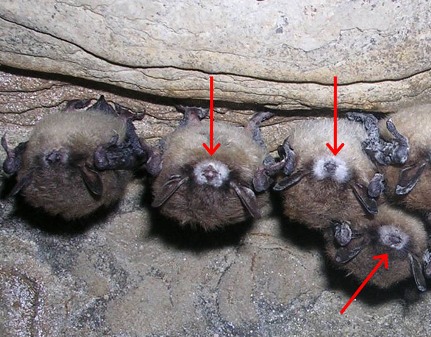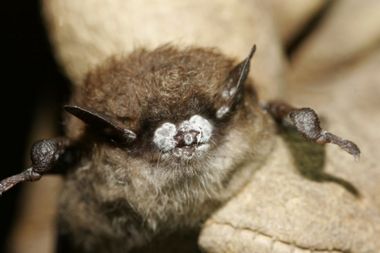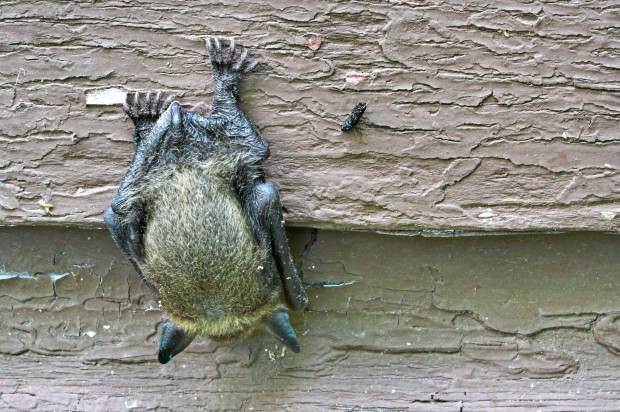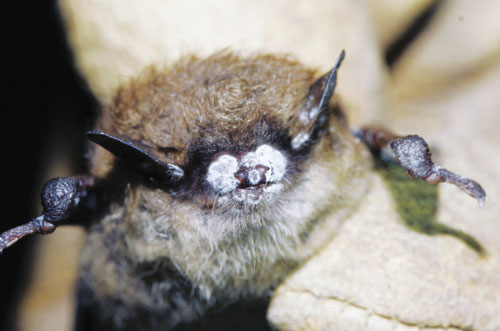Though many people abhor the thought or the presence of bats, gardeners and farmers know that bats in North America are our friends. They consume many many times their weight in insects-insects that devastate garden plants and crops. I am sure they have been a model for many a horror film character, but they actually are great friends of the garden.
A fungal disease first identified in New York in 2006 infects the skin of bats-all species of bats. In the final stages of infection, the fungus grows on the muzzles of bats-thus the name White Nose Syndrome. The origin of the fungus is unknown, but it is known that it thrives in moist places, and cannot tolerate temperatures above 68 degrees. This means that the fungus is active and irritating to the bats when they are hibernating. During the hibernation period, bats “wake up” periodically just to do a systems check-and then the quickly fall back to sleep. The energy it takes to rouse them from their torpor and power up to make this check comes from their fat reserves. The fungus makes them wake up much too often, as it is an irritant, and a wakeup call to their immune system. What should be an intermittent check gets to be a life threatening event.
From a radio program on Stateside, “It wakes bats up from hibernation too frequently, once every week. In order to go from a hibernating temperature of 45 degrees, raise their body temperature to 99 degrees, and go back down to 45 degrees takes as much energy as they would use in 60 days of continuous hibernation. Because they wake up frequently, the run out of fat by early February, and die of starvation.I have read about this in some detail. There is disagreement about whether our Michigan bats have been affected yet, but it is known that the mortality rates in infected caves can be as high as 95%. A bat who has run out of energy, whose fat has been entirely used up fighting this fungus, may be forced to wake up, and fly. On the fly in February, there is no food available for them. Our landscape is usually blanketed with snow in February. The opportunities to eat are few and far between. Bats that come out of hibernation too early-enormous danger, dead ahead.
The danger faced by any living thing in a natural world- an ordinary event. A disease that is known to kill vast numbers of bats may be ordinary, but it is alarming. Many of the bats in the Upper Peninsula of Michigan hiberate in the caves created by mining in the west. Those caves are remote. One can only hope they will escape what poses a very serious threat to all species of bats that live in North America.
The danger this fungus poses to bat populations is terrifying. I have read some articles that suggest it could wipe out entire species of bats. These little creatures rarely bother anyone. If I am outside on the deck in the summer after dark, I see them flying around-feeding on those bugs that would otherwise bedevil my garden. Bats cannot really protect themselves from disease. They do not have internists with whom they can make an appointment. This plague on the bats has been on my mind for the better part of two days. As for the fungus, it has a life and a niche too. Passing by the blackspot on the roses, or the mildew on the phlox is not that tough. However a world without bats-not good. It is not only dangerous to garden, it is dangerous to live.
I so hope someone will be able to help the bats.




